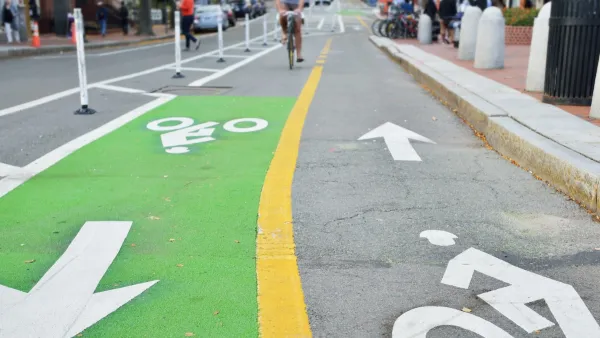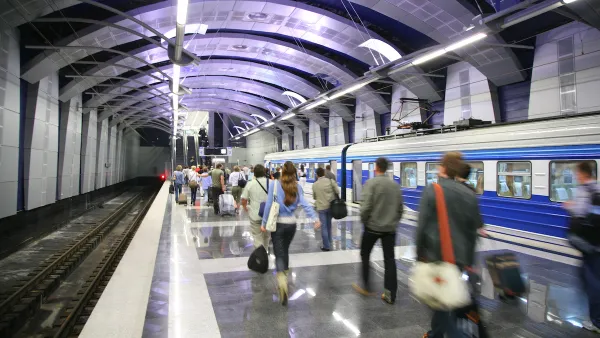The Project for Public Spaces has been sending around the e-mail circuit a mock-up of a Time magazine cover dated April 1 (no fooling) 2017, with a “Placemaking” headline acclaiming the triumph of smart growth principles. 2017? They’re being way too modest.
The Project for Public Spaces has been sending around the e-mail circuit a mock-up of a Time magazine cover dated April 1 (no fooling) 2017, with a "Placemaking" headline acclaiming the triumph of smart growth principles. 2017? They're being way too modest.

For most of the 1990s and into this century, mixed-use, pedestrian and transit friendly places were the oddity, the enclave, some place to visit. Planner-tourists went to Seaside, the Kentlands, Celebration, Mashpee Commons, Laguna West. Meanwhile some communities were steadily, without much fanfare, remaking the physical form of their place.
About six years ago, Fort Collins, Colorado, even while under constant growth pressure, started restoring the notion of authentic neighborhoods by requiring a mix of housing types in each neighborhood and specifying a proportion that had to be within three-fourths a mile from a neighborhood center or commercial district. They worked on better street connectivity.
Charlotte, North Carolina's been doing the hard work of passing ordinances to make a Centers and Corridors policy become real. People are moving to town centers to live where people never lived before, such as downtown Chattanooga. These places are not citadels of progressivism; they're not Portland, Oregon. Salt Lake City is home to a huge emerging mixed-use residential community that could be a monument to the principles of smart growth. These are places better known for conservative, limited government intervention in the marketplace. But they're also cities where public officials have figured out that building places that attract people to live and work and walk in a more vibrant urban scene pays off in building a population base that is better educated. And that brings the most coveted employers.
In the world of young fashionistas, you know something isn't hip any longer when someone shows up wearing it who shouldn't – like an aging boomer wearing a hoodie. Perhaps the same principle applies here. More likely what we have is a situation in which smart-growthers, getting older themselves, don't seem to have this figured out yet that their core argument is winning. Their conference agendas look stuck still in the drive for legitimacy, in persuading people to see the first light. We'll know for sure that new urban and smart growth and place-making are now mainstream when we see those conference agendas focused on helping communities get their plans and ordinances aligned with the new market.

Analysis: Cybertruck Fatality Rate Far Exceeds That of Ford Pinto
The Tesla Cybertruck was recalled seven times last year.

National Parks Layoffs Will Cause Communities to Lose Billions
Thousands of essential park workers were laid off this week, just before the busy spring break season.

Retro-silient?: America’s First “Eco-burb,” The Woodlands Turns 50
A master-planned community north of Houston offers lessons on green infrastructure and resilient design, but falls short of its founder’s lofty affordability and walkability goals.

Test News Post 1
This is a summary

Analysis: Cybertruck Fatality Rate Far Exceeds That of Ford Pinto
The Tesla Cybertruck was recalled seven times last year.

Test News Headline 46
Test for the image on the front page.
Urban Design for Planners 1: Software Tools
This six-course series explores essential urban design concepts using open source software and equips planners with the tools they need to participate fully in the urban design process.
Planning for Universal Design
Learn the tools for implementing Universal Design in planning regulations.
EMC Planning Group, Inc.
Planetizen
Planetizen
Mpact (formerly Rail~Volution)
Great Falls Development Authority, Inc.
HUDs Office of Policy Development and Research
NYU Wagner Graduate School of Public Service




























